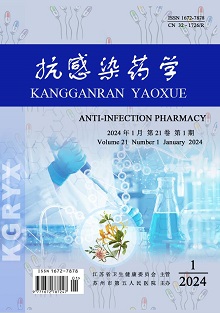ZHOU Ai-chun, LIU Ji-heng, WEN Long, YU Hui, LIU Meng-jiao, LIU Xiao-hui
Objective: To analyze the epidemiological characteristics of cephalosporin-related adverse drug reactions (ADRs) in a hospital, and provide reference for the clinical safe use of cephalosporins. Methods: The ADR reports of 1 074 patients reported by Qiyang Traditional Chinese Medicine Hospital to the National Adverse Drug Reaction Monitoring System from January 1, 2012 to December 31, 2021 were selected as the research data, and the information such as drug type, usage and dosage, and patient's age, sex and clinical manifestations was collected, to analyze the epidemiological characteristics of cephalosporin-related ADRs. Results: In the ADR reports of 1 074 patients, 392 involved antibacterial drugs, including 203 related to cephalosporins; among 203 cases of cephalosporin-related ADRs, the patients were mainly between 18 and less than 45 years (68 cases, 33.50%) and between 45 and less than 65 years (49 cases, 24.14%), and the types involved were mainly the third-generation cephalosporins (152 cases, 74.87%), among which the main varieties involved were ceftazidime for injection (51 cases, 25.12%) and cefotaxime for injection (42 cases, 20.69%); in terms of organs involved, 203 cases of cephalosporin-related ADRs mainly involved the skin and its appendages (163 cases, 80.30%), with the main manifestations of rash, skin itching, urticaria, skin redness and erythema; 30 in 203 cases of cephalosporin-related ADRs were severe ADRs. The univariate analysis results showed that the occurrence of severe ADRs was related to the patient's age and route of drug administration (P<0.05). Conclusion: Cephalosporins play an important role in ADRs related to antibacterial drugs, with obvious characteristics in terms of patient's age, drug type and route of drug administration, and the patient's age and route of drug administration may also be related to the severity of ADRs. Therefore, clinical management and monitoring of patients at risk should be strengthened to ensure the safe medication of patients.
